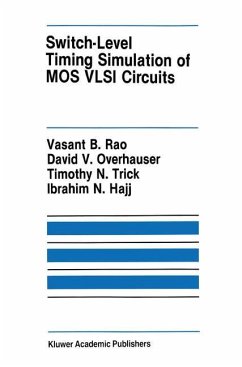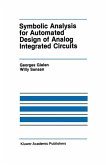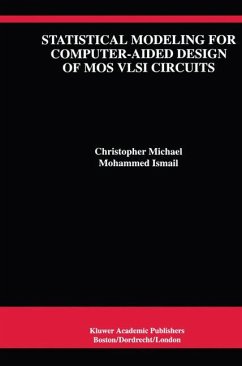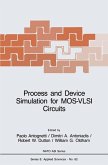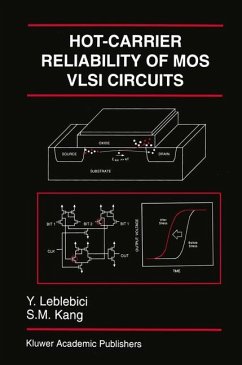The translinear (TL) circuit principle was first formulated as a practical means of implementing nonlinear signal processing functions by bipolar analog electronic circuits. In Analysis and Synthesis of MOS Translinear Circuits it is shown that a generalized interpretation of the TL principle leads quite naturally to an extension to MOS circuits. The square-law characteristic of MOS transistors operated in the saturated region is exploited. This results in nonlinear signal processing functions different from those provided by bipolar translinear circuits which are based on the exponential current--voltage characteristic.
Analysis and Synthesis of MOS Translinear Circuits starts by deriving the MOS Translinear principle and investigating the effects of transistor nonidealities. A systematic approach to analysis is developed based on a graphical method which is easy to visualize. The graphical method is implemented in a computer-aided analysis program. The most important part of the book concerns circuit synthesis. Design strategies are presented, which are illustrated by the design of various useful circuits: an output stage for CMOS opamps, a four-quadrant multiplier and a variable-gamma circuit for color television. A number of new nonlinear building blocks are also present.
Analysis and Synthesis of MOS Translinear Circuits is a valuable reference resource for designers of analog electronic circuits and researchers in analog electronics. It is also suitable for use as a text in advanced courses on the subject.
This book has its roots in an idea first formulated by Barrie Gilbert in 1975. He showed how bipolar analog circuits can realize nonlinear and computational functions. This extended the analog art from linear to nonlinear applications, hence the name trans linear circuits. Not only did this new principle enable marvellous signal processing functions to be accurately implemented, but also the circuits were simple and practical. The perennial problems of analog Ie design, namely temperature sensitivity, processing spread, device nonlinearity and paracitic capacitance were solved to a large extent. Using the trans linear principle in circuit design requires changing your point of view in two ways. First, the grossly nonlinear characteristic of transistors is viewed as an asset rather than as a harmful property. Second, no longer are the signals represented by voltages, but by currents. In fact, the attendant voltage changes are distorted but, as they are very small, they are only ofsecondary interest. Understanding and analyzing a given trans linear circuit is fairly straightforward. But what about the converse situation: suppose you're given some nonlinear or computational function to implement? How to find a suitable translinear circuit realization? The general problem of analog circuit synthesis is a difficult one and is receiving much attention nowadays. Some years ago, I had the opportunity to investigate methods for designing bipolar trans linear circuits. It turned out that translinear networks have some unique topological properties. Using these properties it was possible to establish heuristic synthesis procedures.
Analysis and Synthesis of MOS Translinear Circuits starts by deriving the MOS Translinear principle and investigating the effects of transistor nonidealities. A systematic approach to analysis is developed based on a graphical method which is easy to visualize. The graphical method is implemented in a computer-aided analysis program. The most important part of the book concerns circuit synthesis. Design strategies are presented, which are illustrated by the design of various useful circuits: an output stage for CMOS opamps, a four-quadrant multiplier and a variable-gamma circuit for color television. A number of new nonlinear building blocks are also present.
Analysis and Synthesis of MOS Translinear Circuits is a valuable reference resource for designers of analog electronic circuits and researchers in analog electronics. It is also suitable for use as a text in advanced courses on the subject.
This book has its roots in an idea first formulated by Barrie Gilbert in 1975. He showed how bipolar analog circuits can realize nonlinear and computational functions. This extended the analog art from linear to nonlinear applications, hence the name trans linear circuits. Not only did this new principle enable marvellous signal processing functions to be accurately implemented, but also the circuits were simple and practical. The perennial problems of analog Ie design, namely temperature sensitivity, processing spread, device nonlinearity and paracitic capacitance were solved to a large extent. Using the trans linear principle in circuit design requires changing your point of view in two ways. First, the grossly nonlinear characteristic of transistors is viewed as an asset rather than as a harmful property. Second, no longer are the signals represented by voltages, but by currents. In fact, the attendant voltage changes are distorted but, as they are very small, they are only ofsecondary interest. Understanding and analyzing a given trans linear circuit is fairly straightforward. But what about the converse situation: suppose you're given some nonlinear or computational function to implement? How to find a suitable translinear circuit realization? The general problem of analog circuit synthesis is a difficult one and is receiving much attention nowadays. Some years ago, I had the opportunity to investigate methods for designing bipolar trans linear circuits. It turned out that translinear networks have some unique topological properties. Using these properties it was possible to establish heuristic synthesis procedures.


